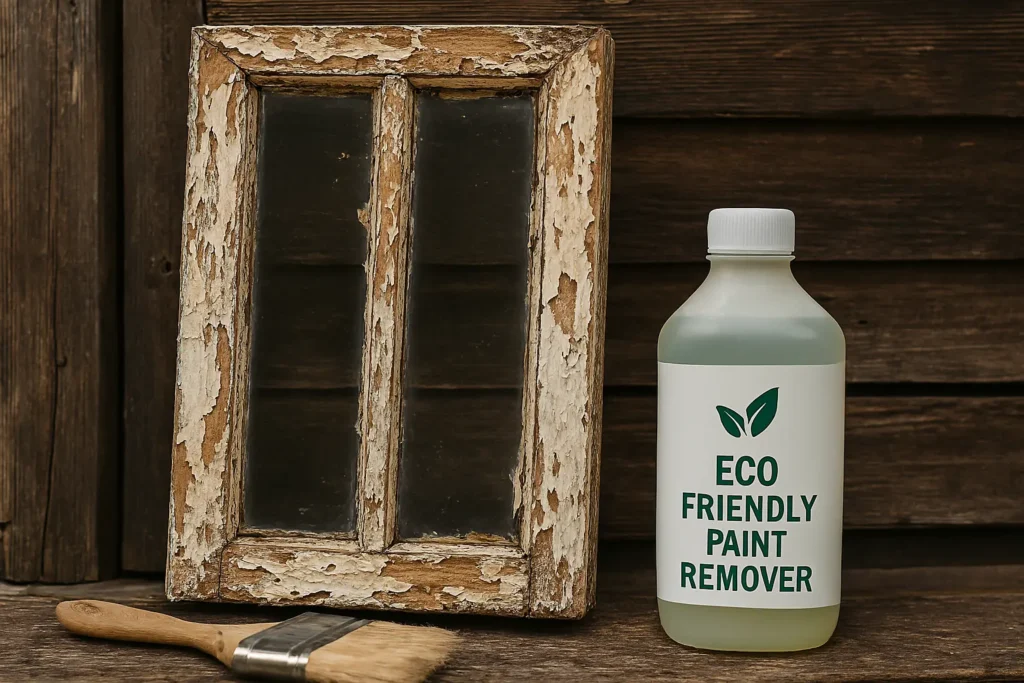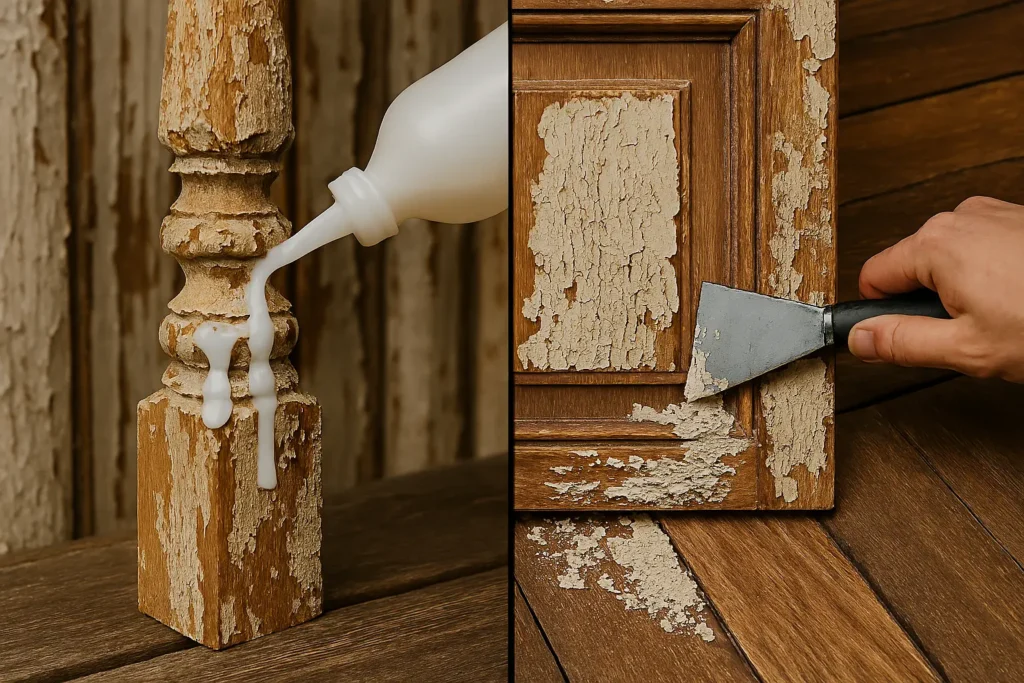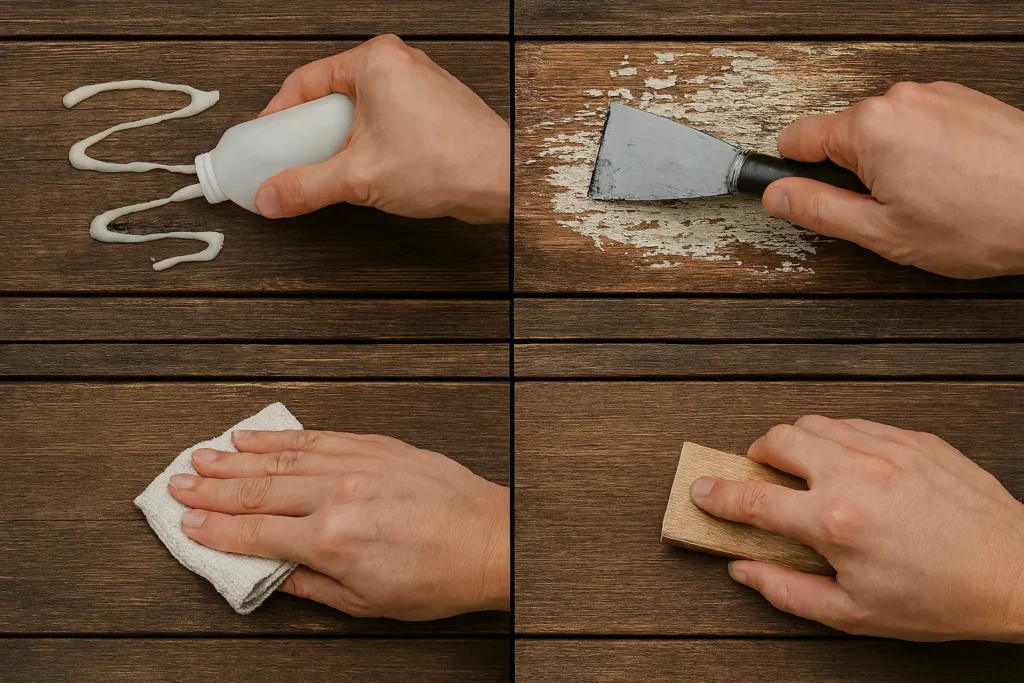Removing paint from wood can feel intimidating, especially if you’re dealing with antique furniture, cabinets, or detailed trim. The good news is that with the right paint remover for wood, the job becomes much easier. In this guide, we’ll cover the best paint removers, DIY solutions, tools, and techniques to restore your wood to its natural beauty.
Why Use a Paint Remover for Wood?
When it comes to removing old paint from woodwork, sanding or scraping alone can damage the surface. A wood paint remover is specially formulated to loosen layers of paint, making it easier to lift without harming the grain.

Whether you need the strongest paint remover for wood or a natural paint remover for wood, the key is choosing the right method for your project. If you’re refinishing after paint removal, you may also want to explore the best paint for wood ceiling to give your space a fresh look.
Types of Paint Removers for Wood
1. Chemical Paint Strippers
These are the best paint removers for wood when you need quick results. They penetrate layers of paint and varnish, making scraping easier.
- Pros: Fast and effective
- Cons: Strong fumes, requires safety gear
They work especially well on paint remover from wood cabinets or furniture with multiple paint layers. For those who prefer gentler methods, you can also look into removing paint with steam, which avoids harsh chemicals.
2. Mechanical Paint Remover for Wood
Mechanical methods include sanders, heat guns, and scraping tools. A paint remover for wood tool is ideal for large, flat surfaces but requires care to avoid gouging.
- Pros: Chemical-free, reusable tools
- Cons: Labor-intensive, not ideal for delicate wood
If you’re tackling big surfaces, similar to working on ceilings, it’s worth checking the best tools to paint a ceiling since many of those tools overlap with surface prep work.
3. Natural and Homemade Paint Removers
If you prefer eco-friendly solutions, try a homemade paint remover for wood. A mix of vinegar, baking soda, and warm water can soften paint layers.
This works best for DIY paint remover from wood trim or DIY paint remover from wood floors, where chemical use is risky. For more DIY inspiration, see how you can make custom chalk paint at home.
Best Paint Removers for Specific Surfaces
- For Furniture: A gel-based paint stripper for wood is perfect for vertical or carved surfaces.
- For Cabinets: Use a semi-paste paint remover from wood cabinets that stays in place for detailed areas.
- For Floors and Trim: Heat guns or natural DIY paint removers from wood floors are safer than harsh chemicals.
- For Metal: Switch to a paint remover for metal, as wood-focused removers won’t be strong enough.

If you’re restoring cabinets, you may also find it helpful to choose the best paint for kitchen cabinets once the surface is stripped.
Factors to Consider When Buying a Paint Remover for Wood
- Strength: Decide if you need the strongest paint remover for wood or a gentler, natural option.
- Application: Gel, liquid, or paste? Gel is best for vertical surfaces.
- Price: Always compare the paint remover for wood price, a higher price doesn’t always mean better results.
- Safety: Low-VOC or eco-friendly products are best for indoor work.
If you’re especially concerned about air quality, you might also look into zero VOC paints for your finishing project.
Step-by-Step: Easy Paint Removal from Wood
- Apply your chosen paint stripper for wood evenly with a brush.
- Let it sit for the recommended time.
- Use a scraper or mechanical paint remover for wood tool to lift softened paint.
- Clean the surface with warm water or solvent.
- Sand lightly before refinishing.

Similar patience and detail are needed when painting, such as when working on edges between wall and ceiling.
DIY Paint Remover for Wood Projects
- Cabinets: Baking soda and hot water mixture is effective on latex paint.
- Trim: Vinegar and lemon juice can remove stubborn paint spots.
- Floors: A heat gun plus scraper is a practical DIY paint remover from wood floors.
Before you repaint, it’s also smart to clean walls properly so the new coat adheres smoothly.
Varnish Remover for Wood
When stripping varnish instead of paint, use a varnish remover for wood. These are designed to penetrate glossy finishes without damaging the surface. If you’re refinishing outdoor wood, you may also consider staining a fence as a related project.
Final Thoughts: Choosing the Best Paint Remover for Wood
The right solution depends on your project:
- For speed, go with the strongest paint remover for wood.
- For eco-friendly projects, use a natural paint remover wood.
- For DIY projects, test a homemade paint remover for wood.
With the right product and method, you can achieve easy paint removal from wood without damaging the surface. If your next step is repainting, see the benefits of painting your home to understand how it can refresh both interiors and exteriors.
FAQ: Paint Remover for Wood
What is the best paint remover for wood furniture?
A gel-based paint stripper for wood is best since it clings to vertical and carved surfaces.
Can I use paint remover for metal on wood?
Not recommended. A paint remover for metal is too strong and can damage wood grain.
How much does paint remover for wood cost?
The paint remover for wood price usually ranges from $10 to $40 depending on the brand and size.
What’s the safest option for indoor use?
A natural paint remover wood or low-VOC formula is the safest choice indoors.
Can I make a DIY paint remover?
Yes, a homemade paint remover for wood can be made with vinegar, baking soda, or citrus-based mixtures.

Leave a Reply